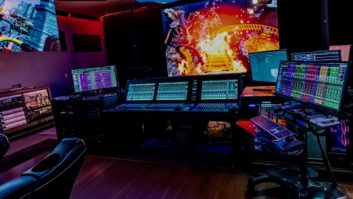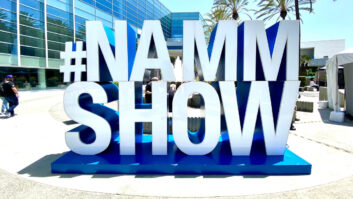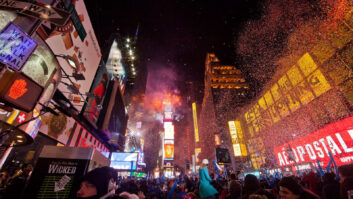LOS ANGELES, CA—Director Jonathan Demme wanted total authenticity on his latest film, Ricki and the Flash, which follows an aging rocker, played by Meryl Streep, as she reconnects with her ex-husband and family in the Midwest. Demme insisted the film’s band had to perform live on camera rather than mime to playback, so for the team recording it all, that meant hiding the microphones.
Neil Citron, a jack-of-all-trades in the fields of both music and audio who is known for his work with the likes of Steve Vai and Quiet Riot, has also enjoyed a long career in film. In 1996, Citron was hired to teach the young actors to play guitar in Tom Hanks’ directorial debut, That Thing You Do. The producer of that film, Gary Goetzman, also produced Ricki, and initially called him in to help audition Streep’s costar. The role went to Rick Springfield, as well-known for playing Dr. Noah Drake in General Hospital as he is for his big 1981 hit, “Jessie’s Girl.”
Nashville Engineer Christopher Rowe is exploring migration to a new primary DAW, with PreSonus Studio One the current front runner. Citron’s involvement soon expanded into teaching Streep to play guitar. Goetzman then put him together with the project’s music coordinator, Mark Wolfson, another That Thing alum, to find a solution to the live performance challenges. “So I hooked them up with PreSonus,” says Citron, “because they needed a P.A. for the shoot.”

The production initially set up an intensive band camp at Rodeo Bar, a defunct venue in Manhattan’s Murray Hill neighborhood. Streep, Springfield and the band—Bernie Worrell on keyboards, Rick Rosas (who tragically died shortly after production wrapped) on bass and Joe Vitale on drums—worked on the songs for two weeks before relocating to a sound stage in Brooklyn, where a set stood in for a Los Angeles-area bar.
For the rehearsals and shoot, PreSonus supplied a StudioLive 32.4.2AI mixer; two StudioLive 312 AI speakers for mid-high PA, plus three for vocal monitors; a StudioLive 315AI speaker for drum monitor; and a pair of StudioLive S18AI subs. An ADL 600 tube preamp offered vocal processing. PreSonus also provided special projects liaison Phil Garfinkel, an experienced live sound engineer.
Since the StudioLive console is integrated with PreSonus Capture recording software and the Studio One DAW, Citron’s role expanded again. “I got hired to record everything live and then mix everything for the editor. They rented us an apartment; we would work all day, then Mark and I would go home and do rough mixes,” says Citron. “That turned into us mixing the whole soundtrack” for release on Republic Records.
“I had the foresight to bring some Sceptre S8 reference monitors,” Garfinkel adds. “Part of the reason that the recordings sound so good, in my opinion, is because Neil and Mark had really quality speakers to do rough mixes on.”
Recording was challenging, as Citron explains: “The first conversation that Gary, Mark and I had, Gary said Jonathan didn’t want any mics on stage, but he wanted to record everything live, with no playback. It’s supposed to be a shitty club in Tarzana; maybe there would be three vocal mics, but that’s it.”
A call went out to Roxanne Ricks, artist relations manager at Audio-Technica, who supplied an ATM450 for the hi-hat, AT4050 for overheads and, for the Leslie, an ATM650 (high) and an ATM250 (low). A-T also provided 5000 Series wireless vocal mics for the wedding reception scenes and a pair of AT4080 ribbons for capturing room ambience.
Citron recalls, “We were at the Rodeo Bar trying to figure out how to get the overheads above the drums in a lighting bar. We found this old boat oar and tied the mics to it, and put that up. That was the easiest thing for the riggers to tie up with the lights.”
As for the drums, Vitale’s DW kit had built-in triggers, which the team hooked into the recording set-up using Garfinkel’s personal collection of Radial Engineering DI boxes. “Once we created drum sounds, we had to put them into a reverb to make them sound like they were in a room. Because we had room mics, I could adjust the size to what it was supposed to be,” says Citron.
Ricki and the Flash and its original soundtrack album were released August 7.
Neil Citron
neilcitron.com
PreSonus
presonus.com
Audio-Technica
audio-technica.com







